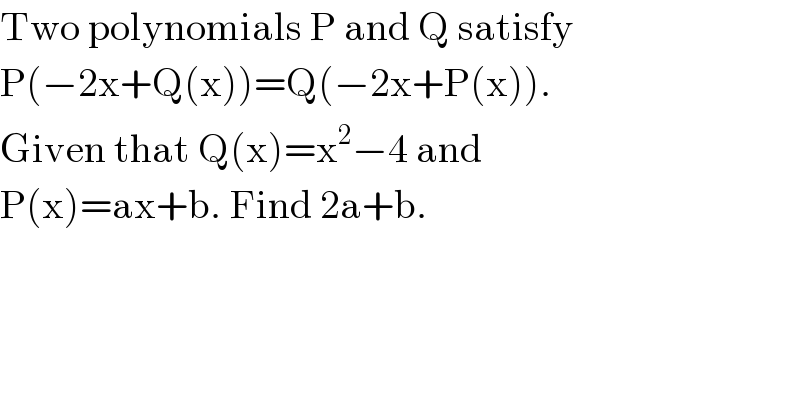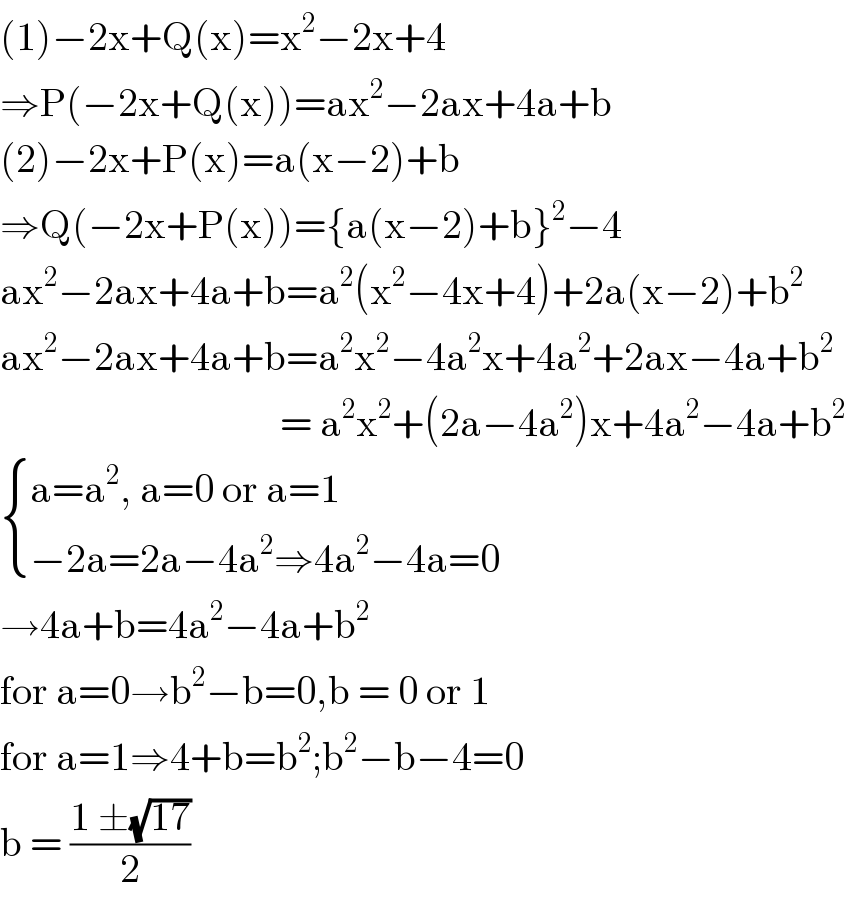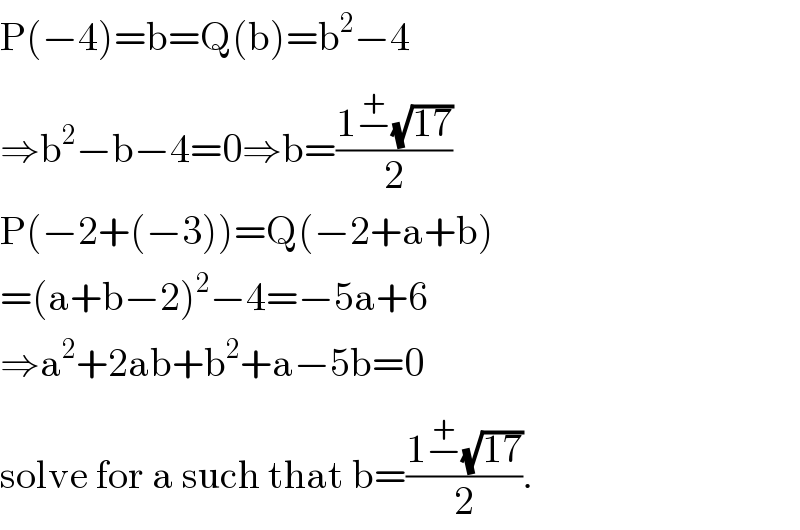Question Number 110675 by Aina Samuel Temidayo last updated on 30/Aug/20

Answered by bemath last updated on 30/Aug/20

Commented by Aina Samuel Temidayo last updated on 30/Aug/20

Commented by bemath last updated on 30/Aug/20

Commented by Aina Samuel Temidayo last updated on 30/Aug/20

Commented by floor(10²Eta[1]) last updated on 30/Aug/20

Commented by Aina Samuel Temidayo last updated on 30/Aug/20

Commented by bemath last updated on 30/Aug/20

Commented by floor(10²Eta[1]) last updated on 30/Aug/20

Answered by Aziztisffola last updated on 30/Aug/20

